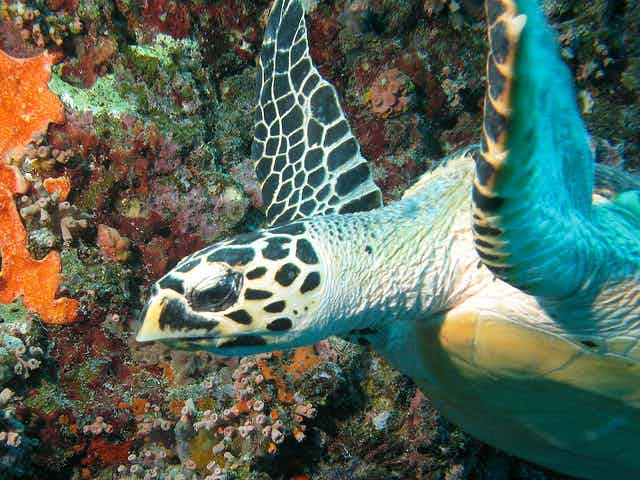There is a myth about Australia’s Great Barrier Reef, that goes like this: because it is so big, biodiverse, so well-managed and generally bloody awesome, the GBR is immune to climate change and other manifestations of human stupidity. Well yesterday’s publication of an important new paper in the Proceedings of the National Academy of Sciences (De'ath et al. 2012) has put an end to that notion.
Scientists from the Australian Institute of Marine Science and the University of Wollongong reported that from 1985 to 2012, average coral cover across the GBR declined from 28% to 14%.
Coral cover is a simple metric of the state or “health” of a reef. It is measured as the percentage of the seafloor covered by living coral. On a pristine reef that hasn’t been disturbed, coral cover is often upwards of 70% and in some instances even 100%.
Corals, tiny animals related to jellyfish, literally build the reef over thousands of years as they secrete calcium carbonate skeletons. These undersea architects create a sort of city, inhabited by hundreds of thousands of other species. When corals die, reef biodiversity plummets and soon enough so does income from SCUBA tourism.

The good news is that it doesn’t appear the GBR’s coral populations have lost their capacity to recover from population-thinning disturbances like predator outbreaks or storms. The problem seems to be that those disturbances are occurring more frequently - a trend that will almost surely continue as climate change really sets in and warms and acidifies the Coral Sea.
The bad news is that things are actually worse than the authors let on. The available science suggests that the GBR lost roughly half its coral before the AIMS study began. Thus, coral populations have declined by at least 75% relative to the likely state of the reef a century or so ago.
These findings are going to (or ought to) make a lot of people very uncomfortable. First, there are the scientists who have been peddling the “unbreakable-GBR” myth. There isn’t any sense in continuing to label the GBR either the “best managed” or “most pristine” reef.
Losing half your herd generally isn’t considered effective wildlife management.
It is therefore tempting to point fingers at the Great Barrier Reef Marine Park Authority, particularly chairman Russell Reichelt, who told The Australian in 2009 that the GBR was in “robust good health”. But to be fair, there isn’t a lot GBRMPA (which clearly recognises the real threats to the reef) could have done to stem these losses.

Then there are the News Corp journalists fond of playing down environmental problems. One is The Australian’s Jamie Walker, who’s 2009 piece “How the reef became blue again” raved about the recovery of individual reefs after a bleaching event in 2006.
This is analogous to cooing over the birth of a newborn Tasmanian Tiger in the 1920s; “Oh my gosh, look, the population has recovered!” Not exactly.
Next in line are the amateur and professional (literally) climate change and reef decline deniers, who you’d think are feeling rather sheepish about this new science. One is Peter Ridd of James Cook University, who says things like “My general view is that the threats and supposed damage to the reef are greatly exaggerated”.
But the big kahuna is coral reef expert Andrew Bolt. Bolt has been mocking scientists like Ove Hoegh-Guldberg (director of the Global Change Institute at the University of Queensland) for sounding warnings about the threat to the GBR from ocean warming and acidification.
Their rollicking dispute goes back years and I doubt Bolt will ever concede, but it has become even more apparent (if that is even possible) that Hoegh-Guldberg’s pessimism (or realism?) was prescient (not that he has anything to celebrate given the outcome).
The big question is, what now? The authors recommended the mitigation of coastal nutrient pollution caused by Queensland’s agriculture in hopes of controlling the coral-destroying starfish plagues. Another key threat to eliminate is overfishing; starfish outbreaks are rare inside the GBR’s reserves where fishing is restricted.

More importantly, we’ve got to begin to tackle climate change. In fact, the nutrient-pollution-solution flies in the face of the obvious take-home lesson from this episode: no place - not Antarctica, the open ocean or the GBR - is or can be made immune to climate change.
Doubling down on local management while ignoring - and frankly gleefully contributing to - the real global problem is the opposite of what Australia should be doing.
Australia has been a world leader in reef management. But to restore the GBR, it is going to have to become a leader in the reduction of greenhouse emission as well. Perhaps curbing the growing urge to share its coal with its neighbors would be a good place to start.

